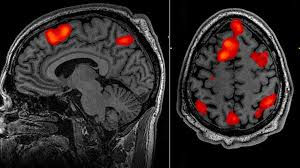Aging & The Vascular System: How Reflexology Supports Circulatory Health
- Jessica Serre

- 7 days ago
- 2 min read

As we age, the vascular system—comprising arteries, veins, and capillaries—undergoes structural and functional changes that can impact circulation, blood pressure, and overall cardiovascular health. While these changes are natural, they can contribute to fatigue, swelling, cold extremities, and increased risk of heart disease. Reflexology, a gentle and non-invasive therapy, is gaining recognition for its potential to support vascular wellness in older adults.
🔬 The Science of Vascular Aging
Scholarly research highlights several key mechanisms behind vascular aging:
Oxidative stress and inflammation damage blood vessel walls, leading to stiffness and reduced elasticity
Telomere shortening and cellular senescence impair vascular smooth muscle cell function (1)
Endothelial dysfunction reduces nitric oxide production, compromising vessel dilation and blood flow
Baroreceptor sensitivity declines, affecting blood pressure regulation and autonomic balance (4)
These changes contribute to conditions like hypertension, atherosclerosis, and reduced tissue perfusion—especially in the lower limbs.
🦶 Reflexology’s Role in Vascular Support
Reflexology involves applying pressure to specific points on the feet that correspond to organs and systems throughout the body. Studies suggest that reflexology may positively influence the vascular system through several mechanisms:
🧠 Neural Pathways & Baroreceptor Reflex
A pilot study from the University of Leeds found that reflexology significantly increased sinus arrhythmia and altered baroreceptor reflex sensitivity, suggesting improved autonomic regulation of blood pressure. This implies that foot stimulation may help recalibrate cardiovascular reflexes affected by aging.
💓 Circulatory Enhancement
Reflexology has been shown to:
Improve peripheral circulation
Stimulate lymphatic drainage, reducing edema
Support venous return, easing symptoms of varicose veins and leg fatigue
🧘 Parasympathetic Activation
By promoting relaxation, reflexology shifts the body into a parasympathetic state—the “rest and digest” mode—which supports heart rate variability and vascular tone (5).
🌱 Reflexology in Practice for Older Adults
Reflexology is especially beneficial for seniors because it:
Is non-invasive and well-tolerated
Can be adapted for mobility or sensitivity issues
Offers emotional and physical relief from chronic conditions
May complement medical treatments for vascular disorders
Practitioners often focus on reflex zones linked to the heart, kidneys, adrenal glands, and lymphatic system to support circulatory balance.
🧭 Conclusion: A Gentle Path to Vascular Vitality
While aging is inevitable, its impact on the vascular system can be mitigated through holistic care. Reflexology offers a promising avenue to support circulation, reduce stress, and enhance overall vascular resilience. Backed by emerging research and centuries of practice, it’s a gentle yet powerful tool for aging well—from the ground up.
references:
Microsoft Copilot





Comments